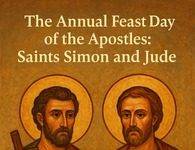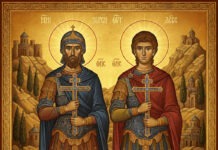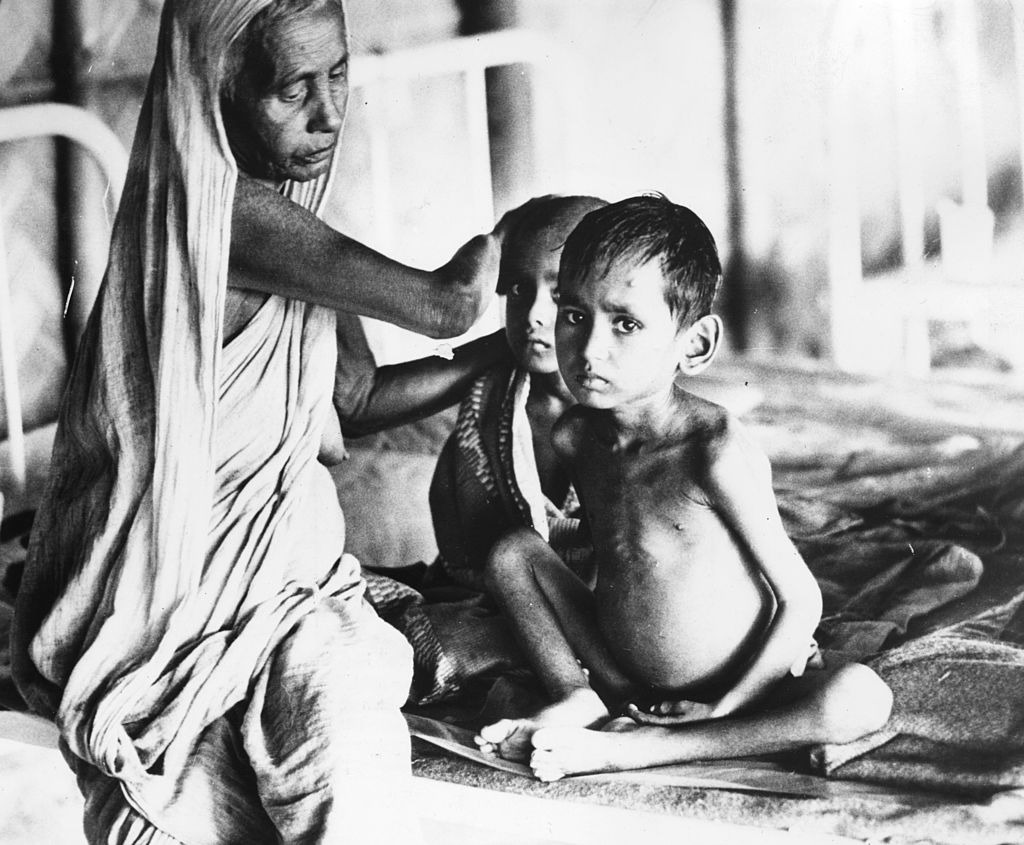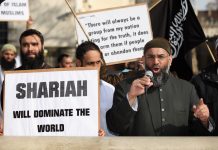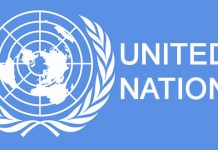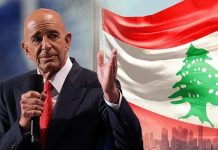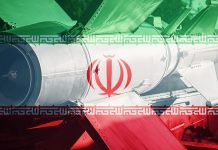الإبادة العرقية والدينية الجماعية في باكستان
أوزاي بولوت/معهد جيتستون/ 30 حزيران/2023 (ترجمة موقع غوغل)
Pakistan’s Genocide
Uzay Bulut/Gatestone Institute/June 30, 2023
“The conflict resulted in the massacre of an estimated three million East Pakistani citizens, the ethnic cleansing of 10 million ethnic Bengalis who fled to India, and the rape of at least 200,000 women (some estimates put the number of rape victims at closer to 400,000).” — hinduamerican.org
“Hindus were the special targets of this violence, as documented by official government correspondence and documents from the United States, Pakistan, and India…. The Pakistan military’s conflation of Hindu, Bengali, and Indian identities meant that all Bengalis (the majority of people in Bangladesh) were suspect…. In the eyes of the Pakistani military, Hindu, Bengali, and Indian identities were one and the same.” — hinduamerican.org
“Bengali Muslim, Christian, Buddhist, and other religious groups were also significantly affected. By the end of the first month in March 1971, 1.5 million Bengalis were displaced. By November 1971, 10 million Bengalis, the majority of whom were Hindu, had fled to India.” — hinduamerican.org
“II]in the eyes of Western Pakistanis and their fundamentalist Muslim collaborators ‘the Hindus among the Bengalis were as Jews to the Nazis: scum and vermin that should best be exterminated.'” — Rudolph Joseph Rummel (1932–2014), leading American scholar of genocides, quoted by sociologist Massimo Introvigne, bitterwinter.org, November 2, 2021.
The genocide, crimes against humanity and war crimes committed by the Pakistani military against millions of people due to their ethnicity, religion, language and political views urgently need to be called out and the perpetrators held accountable.
The genocide committed by Pakistan needs immediate recognition.
“According to Bangladesh Government estimates 3 million people were killed, over two-hundred thousand women were sexually and physically violated, and 10 million people were forced to cross the border into India, leaving behind their ancestral homes and worldly possessions just to save their lives and dignity of their women,” wrote Stichting BASUG (Bangladesh Support Group), a non-governmental organization, together with other Bangladeshi diaspora organizations to the United Nations Secretary General on May 29.
“Over 20 million citizens were internally displaced in search of safety. Newspapers, magazines and publications which are available in libraries and archives all around the world bear testimony to the fact.”
Although this genocide took place after the Turkish genocide of Armenians, Assyrians and Greeks (1913-1923), and after the German genocide of the Jews (1938-1945), it was no less deadly. The letter to the UN stated:
“We must recall that the 1971 GENOCIDE in Bangladesh conceived by the Pakistani authorities, planned and perpetrated by the Pakistani military aided by their Bihari and Bengali collaborators is one of the world’s gravest mass atrocities witnessed after the Second World War.”
The genocide committed against the Bengali nation by the Pakistani military, during the Bangladesh war of independence, began on March 25, 1971 with the launch of Operation Searchlight when the government of Pakistan (then West Pakistan) began a military crackdown on East Pakistan (Bangladesh) to suppress Bengali calls for self-determination.
On that day, the Pakistani military launched a campaign of genocide against the ethnic Bengali and Hindu religious communities in East Pakistan that would last for 10 months. This spurred the 10-month Bangladesh liberation war and later a 13-day India-Pakistan war. Both ended on December 16, 1971, with the surrender of Pakistan.
The recent letter from Stichting BASUG to the UN secretary general, demanded “the ‘International Recognition of the 1971 GENOCIDE’ committed against the Bengali nation by the Pakistani occupation army and their collaborators during Bangladesh War of Independence.”
Dr. Rounaq Jahan, a Bangladeshi political scientist, details the grievances of the people in what was then East Pakistan that led them to demand independence from West Pakistan and the motives of Pakistani genocide perpetrators:
“The Bengalis had to defend not only the right to practice their own language, but other creative expressions of their culture such as literature, music, dance, and art. The Pakistani ruling elites looked upon Bengali language and culture as too ‘Hindu leaning’ and made repeated attempts to ‘cleanse’ it from Hindu influence. First, in the 1950s, attempts were made to force Bengalis to substitute Bengali words with Arabic and Urdu words. Then, in the 1960s, state-controlled media such as television and radio banned songs written by Rabindra Nath Tagore, a Bengali Hindu, who won the Nobel Prize in 1913 and whose poetry and songs were equally beloved by Bengali Hindus and Muslims. The attacks on their language and culture as ‘Hindu leaning’ alienated the Bengalis from the state- sponsored Islamic ideology of Pakistan, and as a result the Bengalis started emphasizing a more secular ideology and outlook.
“The Bengali nationalist movement was also fueled by a sense of economic exploitation. Though jute, the major export- earning commodity, was produced in East Pakistan, most of the economic investments took place in West Pakistan. A systematic transfer of resources took place from East to West Pakistan, creating a growing economic disparity and a feeling among the Bengalis that they were being treated as a colony by Pakistan.”
The Hindu American Foundation notes that Bangladesh’s independence from Pakistan in 1971 was the culmination of several longstanding factors, including linguistic and cultural repression, economic marginalization, political disenfranchisement, and a quest for greater provincial autonomy.
“The West Pakistani military and civilian elite sought to create a cohesive polity unified by Islam and the Urdu language. In the process, they suppressed the Bengali culture and language, which was viewed as closely linked to Hinduism and therefore, a threat to their conception of an Islamic nation.
“The Bangladeshi independence movement in 1971 was met with a brutal genocidal campaign of violence by the Pakistani army and local Islamist militias. The conflict resulted in the massacre of an estimated three million East Pakistani citizens, the ethnic cleansing of 10 million ethnic Bengalis who fled to India, and the rape of at least 200,000 women (some estimates put the number of rape victims at closer to 400,000). Hindus were the special targets of this violence, as documented by official government correspondence and documents from the United States, Pakistan, and India. However all Bengalis, regardless of religious identity were targeted. The Pakistan military’s conflation of Hindu, Bengali, and Indian identities meant that all Bengalis (the majority of people in Bangladesh) were suspect.
“In the eyes of the Pakistani military, Hindu, Bengali, and Indian identities were one and the same. Although Hindus were a special target of the Pakistan military, Bengali Muslim, Christian, Buddhist, and other religious groups were also significantly affected. By the end of the first month in March 1971, 1.5 million Bengalis were displaced. By November 1971, 10 million Bengalis, the majority of whom were Hindu, had fled to India.”
In the Harvard International Review, Kimtee Kundu recently wrote about the motives of the perpetrators of this genocide:
“Started as a mission to maintain autocratic Pakistani governance over the self-determination driven Bangladeshis, the operation intended to capture activists, intellectuals, and troopers. However, they were not the only victims. Humanitarian crisis broke loose as millions of civilians endured the violent realities of displacement, financial instability, trauma, and death.
“Pakistan’s leaders also aimed to enforce Islamic unification of the west and the east. Due to differences between Pakistani and Bangladeshi communities, intolerance spread from a multitude of aspects. Pakistan was predominantly an Islamic, Urdu speaking region; meanwhile, Bangladesh was both a Hindu and Islamic, Bangla speaking region. As the Pakistani leaders, or the then Muslim League, determined, these apparent differences made Bangladeshis undesirable and inferior, especially given the Pakistani agenda to create an Islamic nation. Consequently, the Bangla language—which relates more to Hinduism and Sanskrit—was deemed undesirable, and those who were Hindu were the primary targets. Fearing the dangers of war, over 10 million Bangladeshis fled.”
“One of the goals of the West Pakistanis and their collaborators in 1971 was to exterminate the Hindu community by killing all males,” noted Massimo Introvigne, a prominent sociologist of religions:
“The roots of the ideology considering the Eastern Pakistanis ‘inferior’ or ‘bad’ Muslim was… the accusation that they were ‘crypto-Hindus,’ and had included in their religious practices Hindu elements that had tainted their faith.
“Two third of the eight million refugees who escaped East Pakistan were Hindus. What the Western Pakistanis did not consider was that, faced with such an enormous influx of refugees, even the Indian politicians most reluctant to go to war would conclude that an armed conflict was an easier solution than accommodating in India the whole Hindu population of East Pakistan.
“A disproportionate number of Hindus, however, were killed in 1971. In [1971], Hindus were some 20% of the East Pakistan’s population, yet it was estimated that they might have been 50% of those killed. American leading scholar of genocides Rudolph Joseph Rummel (1932–2014)… wrote that in the eyes of Western Pakistanis and their fundamentalist Muslim collaborators ‘the Hindus among the Bengalis were as Jews to the Nazis: scum and vermin that should best be exterminated.’
“The parallel with the Nazi persecution of Jews is made even more appropriate by the fact that the Western Pakistani army compelled Hindus to have a yellow ‘H’ painted on their homes, thus designating those who lived there as targets for extermination.
“Hindu women, however, in most cases were not killed but massively raped, forced into prostitution, or forcibly married to Western Pakistani soldiers and local collaborator militiamen, just as it happened to their Muslim Bengali counterparts.”
“Academic research and scholarship related to the study of genocide has largely recognized the historical event of 1971 as GENOCIDE,” according the Stichting BASUG’s letter to the UN.
” The recent issuance of a statement by the International Association of Genocide Scholars (IAGS) recognizes the Genocide and calls for action by world bodies….
“The world body of Genocide scholarship is fully convinced of the fact that documentation available on Bangladesh Genocide in 1971 is quite adequate for recognition by the UN and countries across the globe…
“New generations across the world must know what happened in Bangladesh in 1971. We must learn from atrocities in the past to prevent future ones to achieve the universal goal of ‘Never again’, which was the prime goal while enacting the UN Genocide Convention. Early recognition of Bangladesh Genocide is crucial today to champion the cause of protecting human rights, practicing what we preach, and preventing more genocides to happen in the future while holding perpetrators accountable for the crime they committed.
“Therefore, we strongly demand that the 1971 GENOCIDE be recognized to give justice to the victims of the atrocities and bring the perpetrators to justice. We also call upon the United Nations General Assembly and other international entities to formally recognize the Bangladesh GENOCIDE of 1971 – one of the darkest yet most overlooked chapters in the human history. We believe that only through confronting the past with sincerity and truth, rising above narrow political interests, we can acknowledge our shared humanity and join hands for a safer, peaceful world.”
The genocide, crimes against humanity and war crimes committed by the Pakistani military against millions of people due to their ethnicity, religion, language and political views urgently need to be called out and the perpetrators held accountable.
*Uzay Bulut, a Turkish journalist, is a Distinguished Senior Fellow at the Gatestone Institute. She is also a research fellow for the Philos Project.
© 2023 Gatestone Institute. All rights reserved. The articles printed here do not necessarily reflect the views of the Editors or of Gatestone Institute. No part of the Gatestone website or any of its contents may be reproduced, copied or modified, without the prior written consent of Gatestone Institute.
الإبادة الجماعية في باكستان
أوزاي بولوت/معهد جيتستون/ 30 حزيران/2023 (ترجمة موقع غوغل)
“أدى الصراع إلى مذبحة لما يقدر بثلاثة ملايين مواطن باكستاني شرقي ، وتطهير عرقي لعشرة ملايين من البنغاليين الذين فروا إلى الهند ، واغتصاب ما لا يقل عن 200000 امرأة (تشير بعض التقديرات إلى أن عدد ضحايا الاغتصاب يقترب من 400000. ). ” – hinduamerican.org
“كان الهندوس أهدافًا خاصة لهذا العنف ، كما هو موثق في المراسلات الحكومية الرسمية والوثائق من الولايات المتحدة وباكستان والهند …. كان الخلط العسكري الباكستاني للهويات الهندوسية والبنغالية والهندية يعني أن جميع البنغاليين (الأغلبية من الناس في بنغلاديش) مشتبه بهم …. في نظر الجيش الباكستاني ، كانت الهويات الهندوسية والبنغالية والهندية واحدة “. – hinduamerican.org
“تأثر المسلمون البنغاليون والمسيحيون والبوذيون والجماعات الدينية الأخرى بشكل كبير. وبحلول نهاية الشهر الأول في مارس 1971 ، تم تشريد 1.5 مليون بنغالي. وبحلول تشرين الثاني (نوفمبر) 1971 ، كان 10 ملايين بنغالي ، غالبيتهم من الهندوس. هربوا إلى الهند “. – hinduamerican.org
“II] في نظر الباكستانيين الغربيين والمتعاونين معهم من المسلمين الأصوليين ، كان الهندوس بين البنغاليين يهودًا للنازيين: حثالة وحشرات ينبغي إبادتها على أفضل وجه.” – رودولف جوزيف روميل (1932-2014) ، رائد أمريكي عالم الإبادة الجماعية ، نقلاً عن عالم الاجتماع ماسيمو إنتروفيني ، bitterwinter.org ، 2 نوفمبر 2021.
إن الإبادة الجماعية والجرائم ضد الإنسانية وجرائم الحرب التي ارتكبها الجيش الباكستاني ضد ملايين الأشخاص بسبب عرقهم ودينهم ولغتهم وآرائهم السياسية بحاجة ماسة إلى المطالبة بها ومحاسبة مرتكبيها.
إن الإبادة الجماعية التي ارتكبتها باكستان تحتاج إلى اعتراف فوري.
“وفقًا لتقديرات حكومة بنغلاديش ، قُتل 3 ملايين شخص ، وتعرضت أكثر من مائتي ألف امرأة للاعتداء الجنسي والبدني ، واضطر 10 ملايين شخص لعبور الحدود إلى الهند ، تاركين ورائهم منازل أجدادهم وممتلكاتهم الدنيوية فقط لإنقاذ حياتهم. وكرامة نسائهم “، كتب ستيشتينغ باسوج (مجموعة دعم بنغلاديش) ، وهي منظمة غير حكومية ، إلى جانب منظمات الشتات البنغلاديشي الأخرى ، إلى الأمين العام للأمم المتحدة في 29 مايو.
“نزح أكثر من 20 مليون مواطن داخليًا بحثًا عن الأمان. وتشهد الصحف والمجلات والمطبوعات المتوفرة في المكتبات ودور المحفوظات في جميع أنحاء العالم على هذه الحقيقة”.
على الرغم من أن هذه الإبادة الجماعية حدثت بعد الإبادة الجماعية للأرمن والآشوريين واليونانيين (1913-1923) ، وبعد الإبادة الجماعية لليهود (1938-1945) ، إلا أنها لم تكن أقل فتكًا. نصت الرسالة الموجهة إلى الأمم المتحدة على ما يلي:
“يجب أن نتذكر أن الإبادة الجماعية لعام 1971 في بنغلاديش التي تصورتها السلطات الباكستانية ، والتي خططت لها ونفذتها الجيش الباكستاني بمساعدة المتعاونين البيهاريين والبنغاليين ، هي واحدة من أخطر الفظائع الجماعية التي شهدها العالم بعد الحرب العالمية الثانية”.
بدأت الإبادة الجماعية التي ارتكبها الجيش الباكستاني ضد الأمة البنغالية ، خلال حرب استقلال بنغلاديش ، في 25 مارس 1971 بإطلاق عملية الكشاف عندما بدأت حكومة باكستان (غرب باكستان آنذاك) حملة عسكرية على شرق باكستان (بنغلاديش). ) لقمع الدعوات البنغالية لتقرير المصير.
في ذلك اليوم ، شن الجيش الباكستاني حملة إبادة جماعية ضد الطوائف العرقية البنغالية والهندوسية في شرق باكستان استمرت لمدة 10 أشهر. أدى ذلك إلى اندلاع حرب تحرير بنجلاديش التي استمرت 10 أشهر ، ثم حرب الهند الباكستانية التي استمرت 13 يومًا. انتهى كلاهما في 16 ديسمبر 1971 باستسلام باكستان.
طالبت الرسالة الأخيرة من Stichting BASUG إلى الأمين العام للأمم المتحدة “بالاعتراف الدولي بإبادة عام 1971 التي ارتكبها جيش الاحتلال الباكستاني والمتعاونون معهم ضد الأمة البنغالية خلال حرب استقلال بنغلاديش”.
يشرح الدكتور رونق جهان ، أستاذ العلوم السياسية البنغلاديشي ، مظالم الناس في ما كان يُعرف وقتها بباكستان الشرقية التي دفعتهم إلى المطالبة بالاستقلال عن غرب باكستان ودوافع مرتكبي الإبادة الجماعية الباكستانية:
“كان على البنغاليين أن يدافعوا ليس فقط عن الحق في ممارسة لغتهم الخاصة ، ولكن أيضًا عن أشكال التعبير الإبداعي الأخرى لثقافتهم مثل الأدب والموسيقى والرقص والفن. نظرت النخب الباكستانية الحاكمة إلى اللغة والثقافة البنغالية على أنها أيضًا” ميول هندوسية ” وقاموا بمحاولات متكررة “لتطهيرها” من التأثير الهندوسي. أولاً ، في الخمسينيات من القرن الماضي ، جرت محاولات لإجبار البنغاليين على استبدال الكلمات البنغالية بكلمات عربية وأردية. ثم ، في الستينيات ، كانت وسائل الإعلام التي تسيطر عليها الدولة مثل التلفزيون والراديو حظرت الأغاني التي كتبها رابندرا ناث طاغور ، وهو هندوسي بنغالي ، فاز بجائزة نوبل في عام 1913 والذي كان شعره وأغانيه محبوبًا على حد سواء من قبل الهندوس والمسلمين البنغاليين. وأدى الهجوم على لغتهم وثقافتهم على أنها “ميول هندوسية” إلى نفور البنغاليين من الأيديولوجية الإسلامية التي ترعاها الدولة في باكستان ، ونتيجة لذلك بدأ البنغاليون في التأكيد على أيديولوجية ونظرة أكثر علمانية.
“الحركة القومية البنغالية كان يغذيها أيضًا شعور بالاستغلال الاقتصادي. وعلى الرغم من إنتاج الجوت ، السلعة الرئيسية التي تدر عائدات التصدير ، في شرق باكستان ، فإن معظم الاستثمارات الاقتصادية حدثت في غرب باكستان. وتم نقل منهجي للموارد من باكستان. من الشرق إلى الغرب من باكستان ، مما خلق تفاوتًا اقتصاديًا متزايدًا وشعورًا بين البنغاليين بأنهم يعاملونهم كمستعمرة من قبل باكستان “.
تشير المؤسسة الهندوسية الأمريكية إلى أن استقلال بنغلاديش عن باكستان في عام 1971 كان تتويجًا لعدة عوامل طويلة الأمد ، بما في ذلك القمع اللغوي والثقافي ، والتهميش الاقتصادي ، والحرمان السياسي ، والسعي لتحقيق قدر أكبر من الحكم الذاتي الإقليمي.
“سعت النخبة العسكرية والمدنية الباكستانية الغربية إلى إقامة نظام حكم متماسك يوحده الإسلام واللغة الأوردية. وفي هذه العملية ، قمعوا الثقافة واللغة البنغالية ، التي اعتُبرت مرتبطة ارتباطًا وثيقًا بالهندوسية ، وبالتالي ، فإنها تشكل تهديدًا لمفهومهم. أمة إسلامية.
“قوبلت حركة استقلال بنغلاديش في عام 1971 بحملة إبادة جماعية وحشية من قبل الجيش الباكستاني والميليشيات الإسلامية المحلية. وأسفر الصراع عن مذبحة لما يقدر بثلاثة ملايين مواطن باكستاني شرقي ، وتطهير عرقي لعشرة ملايين من البنغاليين الذين فروا من البلاد. إلى الهند ، واغتصاب ما لا يقل عن 200000 امرأة (تشير بعض التقديرات إلى أن عدد ضحايا الاغتصاب يقترب من 400000). وكان الهندوس أهدافًا خاصة لهذا العنف ، كما هو موثق في المراسلات والوثائق الحكومية الرسمية من الولايات المتحدة وباكستان ، والهند ، ومع ذلك ، تم استهداف جميع البنغاليين ، بغض النظر عن الهوية الدينية.كان الخلط بين الجيش الباكستاني للهويات الهندوسية والبنغالية والهندية يعني أن جميع البنغاليين (غالبية الناس في بنغلاديش) كانوا مشتبه بهم.
“في نظر الجيش الباكستاني ، كانت الهويات الهندوسية والبنغالية والهندية واحدة. وعلى الرغم من أن الهندوس كانوا هدفًا خاصًا للجيش الباكستاني ، فقد تأثر المسلمون البنغاليون والمسيحيون والبوذيون والمجموعات الدينية الأخرى بشكل كبير. في نهاية الشهر الأول في آذار / مارس 1971 ، نزح 1.5 مليون بنغالي. وبحلول تشرين الثاني / نوفمبر 1971 ، فر 10 ملايين بنغالي ، غالبيتهم من الهندوس ، إلى الهند “.
في مجلة Harvard International Review ، كتبت Kimtee Kundu مؤخرًا عن دوافع مرتكبي هذه الإبادة الجماعية:
“بدأت كمهمة للحفاظ على الحكم الباكستاني الاستبدادي على حق تقرير المصير الذي دفعه البنغلاديشيون ، وكانت العملية تهدف إلى القبض على النشطاء والمثقفين والجنود. ومع ذلك ، لم يكونوا الضحايا الوحيدين. اندلعت الأزمة الإنسانية حيث عانى ملايين المدنيين من أعمال العنف. حقائق النزوح وعدم الاستقرار المالي والصدمات والموت.
“كان القادة الباكستانيون يهدفون أيضًا إلى فرض التوحيد الإسلامي بين الغرب والشرق. وبسبب الاختلافات بين المجتمعات الباكستانية والبنغلاديشية ، انتشر التعصب من عدة جوانب. كانت باكستان في الغالب منطقة إسلامية ناطقة باللغة الأردية ؛ وفي الوقت نفسه ، كانت بنغلاديش هندوسية. والمنطقة الإسلامية الناطقة باللغة البنغالية. كما قرر القادة الباكستانيون ، أو الرابطة الإسلامية في ذلك الوقت ، فإن هذه الاختلافات الواضحة جعلت البنغلاديشيين غير مرغوب فيهم وأقل شأناً ، لا سيما بالنظر إلى الأجندة الباكستانية لإنشاء أمة إسلامية. وبالتالي ، فإن اللغة البنغالية – التي ترتبط أكثر الهندوسية والسنسكريتية – كانت تعتبر غير مرغوب فيها ، وكان أولئك الذين كانوا من الهندوس هم الأهداف الأساسية. وخوفًا من مخاطر الحرب ، فر أكثر من 10 ملايين بنجلاديشي “.
أشار ماسيمو إنتروفيني ، عالم اجتماع الأديان البارز ، إلى أن “أحد أهداف الباكستانيين الغربيين والمتعاونين معهم في عام 1971 كان إبادة المجتمع الهندوسي بقتل جميع الذكور”:
“إن جذور الأيديولوجية التي تعتبر المسلمين الباكستانيين الشرقيين” الدونية “أو” السيئة “هي … الاتهام بأنهم” هندوس مشفرون “، وأنهم أدرجوا في ممارساتهم الدينية عناصر هندوسية شوهت إيمانهم.
“كان ثلثا ثمانية ملايين لاجئ فروا من شرق باكستان من الهندوس. وما لم يفكر فيه الباكستانيون الغربيون هو أنه في مواجهة مثل هذا التدفق الهائل للاجئين ، فإن حتى السياسيين الهنود الأكثر ترددًا في خوض الحرب قد يستنتجون أن نزاعًا مسلحًا كان حلاً أسهل من استيعاب جميع السكان الهندوس في شرق باكستان في الهند.
“ومع ذلك ، قُتل عدد غير متناسب من الهندوس في عام 1971. في [1971] ، كان الهندوس يمثلون حوالي 20٪ من سكان باكستان الشرقية ، ومع ذلك قُدر أنهم ربما كانوا 50٪ من القتلى. باحث أمريكي بارز في الإبادة الجماعية كتب رودولف جوزيف روميل (1932-2014) … أنه في نظر الباكستانيين الغربيين والمتعاونين معهم من المسلمين الأصوليين “كان الهندوس بين البنغاليين يهودًا للنازيين: حثالة وحشرات ينبغي إبادتها على أفضل وجه”.
“إن التشابه مع الاضطهاد النازي لليهود أصبح أكثر ملاءمة لأن الجيش الباكستاني الغربي أجبر الهندوس على رسم حرف” H “أصفر على منازلهم ، وبالتالي تصنيف أولئك الذين عاشوا هناك كأهداف للإبادة.
“ومع ذلك ، لم تُقتل الهندوسات في معظم الحالات ، بل تعرضت للاغتصاب الجماعي ، أو أُجبرت على ممارسة الدعارة ، أو تزوجت قسراً من جنود باكستانيين غربيين ورجال ميليشيات محليين متعاونين ، تمامًا كما حدث مع نظرائهم البنغاليين المسلمين”.
“البحث الأكاديمي والمنح الدراسية المتعلقة بدراسة الإبادة الجماعية قد اعترفت إلى حد كبير بالحدث التاريخي لعام 1971 باعتباره GENOCIDE” ، وفقًا لرسالة Stichting BASUG إلى الأمم المتحدة.
“الإصدار الأخير لبيان من قبل الرابطة الدولية لعلماء الإبادة الجماعية (IAGS) يعترف بالإبادة الجماعية ويدعو إلى اتخاذ إجراءات من قبل الهيئات العالمية …
“إن الهيئة العالمية لمنحة الإبادة الجماعية مقتنعة تمامًا بحقيقة أن الوثائق المتاحة عن الإبادة الجماعية في بنغلاديش عام 1971 مناسبة تمامًا للاعتراف بها من قبل الأمم المتحدة والبلدان في جميع أنحاء العالم …
“يجب أن تعرف الأجيال الجديدة في جميع أنحاء العالم ما حدث في بنغلاديش في عام 1971. يجب أن نتعلم من الفظائع في الماضي لمنع الأجيال القادمة من تحقيق الهدف العالمي المتمثل في” عدم تكرار ذلك أبدًا “، والذي كان الهدف الأساسي أثناء سن اتفاقية الأمم المتحدة للإبادة الجماعية. يعد الاعتراف المبكر بالإبادة الجماعية في بنغلاديش أمرًا حاسمًا اليوم لمناصرة قضية حماية حقوق الإنسان ، وممارسة ما نبشر به ، ومنع حدوث المزيد من الإبادة الجماعية في المستقبل مع محاسبة الجناة على الجريمة التي ارتكبوها.
“لذلك ، نطالب بشدة بالاعتراف بالإبادة الجماعية لعام 1971 من أجل تحقيق العدالة لضحايا الفظائع وتقديم الجناة إلى العدالة. كما ندعو الجمعية العامة للأمم المتحدة والكيانات الدولية الأخرى إلى الاعتراف رسميًا بالإبادة الجماعية في بنغلاديش عام 1971 – أحد أحلك الفصول وأكثرها إغفالًا في تاريخ البشرية. نعتقد أنه فقط من خلال مواجهة الماضي بصدق وحقيقة ، والارتفاع فوق المصالح السياسية الضيقة ، يمكننا الاعتراف بإنسانيتنا المشتركة والتكاتف من أجل عالم أكثر أمانًا وسلمًا “.
إن الإبادة الجماعية والجرائم ضد الإنسانية وجرائم الحرب التي ارتكبها الجيش الباكستاني ضد ملايين الأشخاص بسبب عرقهم ودينهم ولغتهم وآرائهم السياسية بحاجة ماسة إلى المطالبة بها ومحاسبة مرتكبيها.
* أوزاي بولوت ، صحفي تركي ، زميل أول متميز في معهد غاتستون. وهي أيضًا زميلة باحثة في مشروع Philos.
© معهد جيتستون 2023. كل الحقوق محفوظة. المقالات المطبوعة هنا لا تعكس بالضرورة آراء المحررين أو معهد جيتستون. لا يجوز إعادة إنتاج أو نسخ أو تعديل أي جزء من موقع Gatestone أو أي من محتوياته ، دون الحصول على موافقة كتابية مسبقة من معهد Gatestone.






